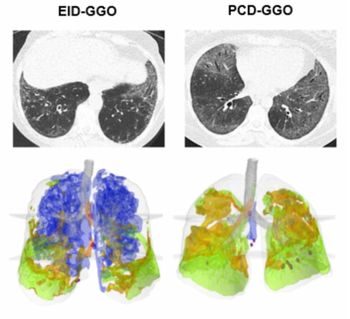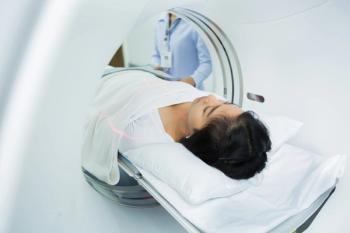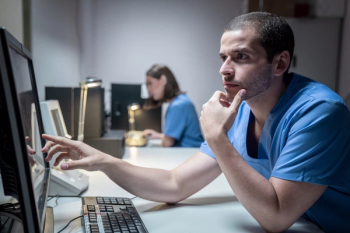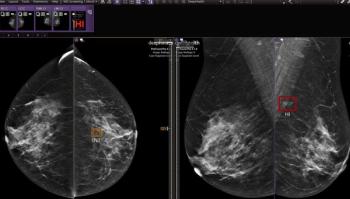
How AI Is Impacting Breast Health
Practitioners are using the technology to make more accurate diagnoses.
The rise of artificial intelligence within radiology has been a cause for great celebration and significant concern in recent years. The excitement over a tool that can take over some of radiology’s more routine tasks is often tempered with a fear of how it could impact providers’ job security. But, overall, practitioners are largely embracing the technology as a method to augment and accelerate their ability to make accurate diagnoses.
Breast ultrasound is one modality where radiologists are turning to artificial intelligence as an effective support mechanism. Benefits have already been seen with computer-aided detection, and artificial intelligence has also already demonstrated its great utility in screening women who have dense breast tissue after mammography.
To date, several companies have already invested in artificial intelligence solutions that can identify anatomical features, auto-annotate pathologies to reduce labeling errors, and make more accurate measurements. These products are based on both early machine learning and deep learning.
Even though definitive guidelines do not yet exist for using artificial intelligence with breast ultrasound, many industry leaders believe, as the technology continues to improve, the potential applications for artificial intelligence are also beginning to expand.
In fact, in a study published this month in the
Additional research also supports greater use of artificial intelligence with breast ultrasound. Research published recently in the
Related article:
And, because artificial intelligence tools can be programmed with significant amounts of clinical data, researchers anticipate the software will soon be able to go beyond distinguishing between benign and malignant breast masses to pinpointing specific breast diseases, such as inflammatory masses and fibroplasia. In addition, the technology could also be enhanced to predict tumor node metastasis classification, prognosis, and treatment responses for breast cancer patients, they said. However, more studies are required to determine the best avenues for expanding artificial intelligence use.
Investigators also pointed to the possibility that holistic artificial intelligence solutions could be designed to integrate across many ultrasound platforms. These tools could also be developed and programmed to have the breadth and depth of medical expertise to assist in ultrasound probe placement during studies. However, researchers added, that capability is still several years away.
Alongside these benefits, there are also other positive ways that artificial intelligence could impact breast ultrasound, according to Vijay Rao, MD, president of the Radiological Society of North America. If artificial intelligence is correlated with clinical data, such as laboratory values, radiologists could be able to render faster diagnoses, she says. In the future, if coupled with genetic information, using these tools could pave the way for more tailored, personalized care, as well.
Ultimately, as growing numbers of practitioners embrace the use of artificial intelligence, one long-term potential outcome is clear. Continued implementation of these tools could enable ultrasound to become an accessible modality almost everywhere and to nearly anyone, simultaneously facilitating the radiologist’s job and providing patients with faster access to care and diagnoses.
Newsletter
Stay at the forefront of radiology with the Diagnostic Imaging newsletter, delivering the latest news, clinical insights, and imaging advancements for today’s radiologists.




























